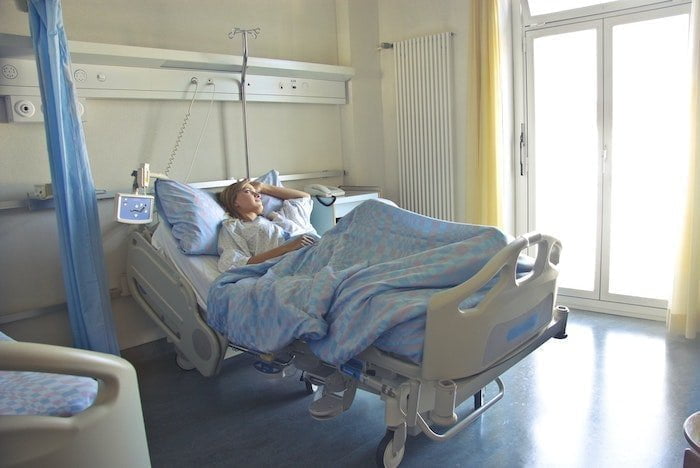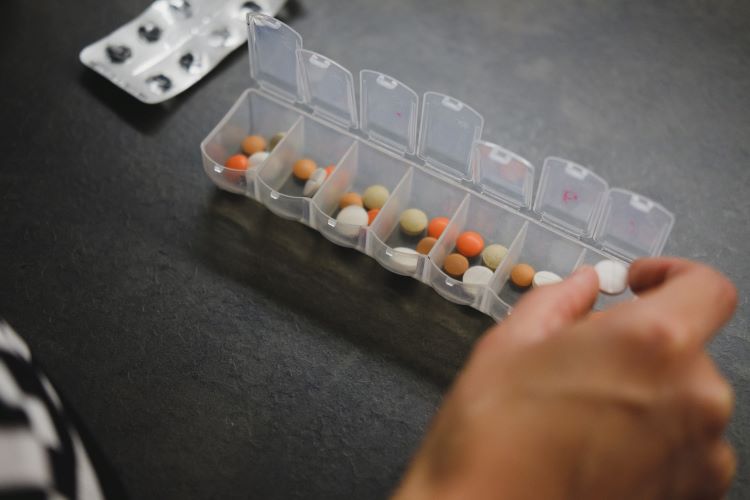Alcohol and the Liver
Quick links for Alcohol and the Liver
- How Alcohol Affects the Liver
- Alcohol-Related Liver Disease
- Symptoms of Alcohol-Related Liver Disease (ARLD)
- Causes of Alcohol-Related Liver Disease
- Stages of Alcohol-Related Liver Disease
- Treating Alcohol-Related Liver Disease
- How to Prevent Alcohol-Related Liver Disease (ARLD)
- References for Alcohol and the Liver
Apart from the brain, the liver is the most complicated and complex organ in the body.
With over 500 different functions, [1] the liver is most notably responsible for:
- Filtering toxins from the blood
- Helping to fight against infections and diseases within the body
- Regulating cholesterol and blood sugar levels
- Aiding the digestion of food
Whilst working to keep the above going, the liver is a very resilient organ and its cells are able to regenerate themselves easily.
However, as the liver filters everything that comes into the body, it also filters alcohol.
When your liver filters alcohol, some of the liver cells die.
Although the liver easily develops new cells, when it’s exposed to alcohol misuse for a prolonged amount of time, the liver’s ability to regenerate and produce new cells reduces.
This can result in prolonged and sometimes permanent damage to the liver.
How Alcohol Affects the Liver

Doctor typing on a laptop researching the effects of alcohol on the liver
When alcohol enters the stomach and intestines, it’s quickly absorbed into the bloodstream.
In order for blood to circulate the body, it must first pass through the liver.
Every hour, liver cells process the alcohol and break it down into other chemicals.
These chemicals are then broken down further, into water and carbon dioxide.
However, when the liver has too much alcohol to try and break down, the other functions of the liver are badly affected and struggle to do their job.
If this occurs frequently, it puts the individual at risk of Alcohol-Related Liver Disease, also known as ARLD.
Alcohol-Related Liver Disease

Two men talking about alcohol and liver disease
Alcohol-Related Liver Disease (ARLD) is when the liver is damaged due to excessive alcohol consumption.
In the UK, around 7,700 people die each year due to alcohol-related liver disease. [2]
It’s estimated that these people are aged mostly between 40 and 65 years old. However, ARLD can affect any person at any age.
The number of people suffering from ARLD in the UK is increasing and it now remains one of the only preventable diseases that is still continuing to rise in the UK.
Even though the disease can be treated if caught early enough, sometimes the symptoms of ARLD can take a long time to appear and present themselves physically.
Symptoms of Alcohol-Related Liver Disease (ARLD)

Man suffering from the symptoms of alcohol-related liver disease
The liver must be severely damaged from alcohol misuse until any symptoms of ARLD appear.
When this eventually happens, the following symptoms may start to present themselves: [3]
- Sickness
- Severe or steady weight loss
- A loss of appetite
- Jaundice (yellowing of the eyes and skin)
- Swelling, including in the tummy and ankles
- Confusion, or drowsiness
- Sicking up blood
- Blood in your poo
Causes of Alcohol-Related Liver Disease

Two women discussing the causes of alcohol-related liver disease
Simply put, alcohol-related liver disease is caused by drinking excessive alcohol on a regular basis.
If you’re frequently drinking above the recommended amount of alcohol, you put yourself at a much higher risk of developing ARLD than someone who stays within the suggested limits.
There are two main ways that excessive alcohol consumption can cause alcohol-related liver disease. They are:
- Binge drinking – drinking a large amount of alcohol in a short amount of time
- Excessive drinking over a prolonged period of time
Stages of Alcohol-Related Liver Disease

Person lying in a hospital bed suffering from the later stages of alcohol-related liver disease
There are three main stages of ARLD. Each stage does often overlap with each stage, so it can sometimes be difficult to establish which stage an individual is in.
This is why it’s important to seek help from a medical professional so that they can help you identify what stage of ARLD you are in, and can get you the correct rehabilitative treatment.
1. Alcoholic Fatty Liver Disease
It only takes drinking excessive and large amounts of alcohol for just a few days to build up fat in the liver. This is the first stage of ARLD and is commonly known as Alcoholic Fatty Liver Disease. [4]
Fatty Liver Disease (FLD) rarely shows any symptoms. However, it’s often the first and most important warning sign that an individual is drinking excessive alcohol.
Being diagnosed with Alcoholic Fatty Liver Disease might be the warning sign people need to start to reduce their intake of alcohol.
The most important thing to remember is that Alcoholic Fatty Liver Disease is reversible, and if you stop drinking alcohol completely (for two weeks or longer) your liver will most likely return to normal.

Patient speaking with a medical professional about alcohol-related liver disease
2. Alcoholic hepatitis
Alcoholic Hepatitis is in no way related to infectious hepatitis.
It is, however, a potentially serious condition that’s caused by consuming excessive amounts of alcohol over a prolonged period of time.
However, Alcoholic Hepatitis might also sometimes occur after a binge drinking session.
When Alcoholic Hepatitis develops, it might be the first time an individual becomes aware that their liver may become damaged.
When someone’s suffering from severe Alcoholic Hepatitis, it can be life-threatening.
In the UK, many individuals die each year from the condition. Sadly, many of those individuals only find out they have liver disease at this late stage.
However, if an individual stops drinking permanently in the early stages, the disease can be reversible.
3. Cirrhosis
If someone suffers from Alcoholic Hepatitis for long enough without abstaining from alcohol, they may develop Cirrhosis.
Even though at this stage the liver is now severely scarred, there may not be any physical symptoms.
Unfortunately, Cirrhosis is not generally reversible. However, if an individual stops drinking alcohol immediately, this can prevent further damage being caused.
Hopefully, by doing so, you’re able to increase your life expectancy.
Treating Alcohol-Related Liver Disease

Person taking medication for alcohol-related liver disease
Unfortunately, there are no known specific medical treatments for ARLD.
The most beneficial thing to do would be to stop drinking alcohol immediately and ideally for the rest of your life.
Abstaining from alcohol completely would significantly reduce the risk of any further damage to the liver and would give you the best chance of recovery.
Understandably, this is very difficult for any person who is addicted to alcohol.
However, there is a lot of support and advice for those suffering from an addiction which can be accessed through local support services.
Liver Transplants
A liver transplant may only be needed in very severe cases. This is usually when the liver has completely stopped functioning and is no longer improving even when the individual abstains from alcohol.
Individuals are only considered for a liver transplant when they’ve reached the Cirrhosis stage, despite them having stopped drinking alcohol completely.
Importantly, the individual must also abstain from drinking alcohol whilst waiting for a liver transplant, and afterwards too.
How to Prevent Alcohol-Related Liver Disease (ARLD)

Doctor and patient discussing how to prevent alcohol-related liver disease
Abstaining from alcohol abuse is the most effective way to prevent ARLD.
It’s important that you stick to your weekly recommended units. For adults (men and women) you are advised to drink no more than 14 units a week. It’s also important that you spread your drinking over at least 3 days if you’re drinking 14 units a week.
One unit of alcohol is the same as about half a pint of normal-strength lager. It’s also the same as 25ml of spirits.
If you’re currently suffering from Fatty Liver Disease then this can be reversed and further damage reduced and avoided by not drinking alcohol.
If you already have significant liver scarring or Cirrhosis then you should not drink any alcohol.
Although there is no cure for Cirrhosis, cutting out alcohol does give you a much better quality of life and a chance of survival.
Individuals can live for decades with ARLD, only if they give up alcohol in time.
If you’re already suffering from ARLD, then the following things might reduce the impact of the disease:
- Exercise and eat healthy foods
- Do not smoke
- Avoiding processed food
- Increase your levels of vitamin D
- Maintain a healthy and steady weight
You can locate rehab clinics in your area here.
References for Alcohol and the Liver
[1] https://www.nhs.uk/conditions/alcohol-related-liver-disease-arld/
[2]https://www.ons.gov.uk/peoplepopulationandcommunity/birthsdeathsandmarriages/deaths/
[4] https://www.nhs.uk/conditions/alcohol-related-liver-disease-arld/






